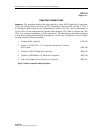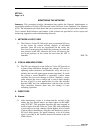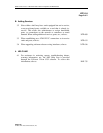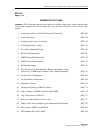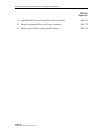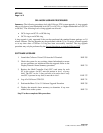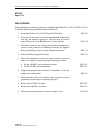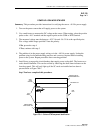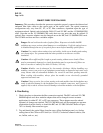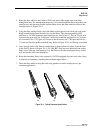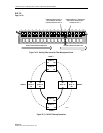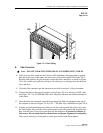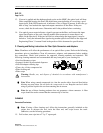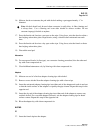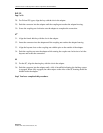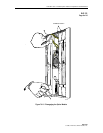
1152700 • Issue 1 • February 2001 • Section 2 Operations and Maintenance
Page 2-46
© 2000, ADC Telecommunications, Inc.
DLP-701
Page 1 of 10
CONNECT FIBERS TO OPTICAL CARDS
Summary: This procedure describes the processes required to properly connect the inbound and
outbound fiber optic cables to the correct ports on the optical cards. The optical connector
configurations may vary from SC, ST, or FC fiber connectors, dependent upon the type of
equipment ordered. Optical cards include the 2488, 622, and 155 RICs and the 155 SM/MM CRS
cards. Note that on the 155 SM/MM CRS cards, there are two ports that may be utilized. If
ordered, fiber connector adapters may be changed out on the RIC and 155 SM/MM CRS cards.
The 155 MM card does not have a modular adapter.
Danger: Do not look into the ends of optical fibers. Exposure to invisible LASER
radiation may cause serious retinal damage or even blindness. Verify the optical source
is disabled through the use of an optical power meter before handling optical fibers.
Caution: Use caution when routing wires and cables. Avoid severe bending and routing
over sharp edges. Use grommet material when possible to avoid wear on cable
insulation.
Caution: Allow sufficient fiber length to permit routing without severe bends. Fibers
may be permanently damaged, or signal degradation may be experienced if fibers are
bent or curved to a radius of less than 1.5 inches (3.81 cm).
Caution: Modules can be damaged by electrostatic discharge. Before handling any
modules connect your wrist to an equipment ground using an approved anti-static wrist
strap. Ensure that all uninstalled modules are stored in anti-static packing material.
When working with modules, always place the module on an electrically grounded
approved anti-static mat.
Caution: Using excessive force when seating cards and modules into the backplane may
result in physical damage to the backplane pins or module connectors, and if power is
applied, may result in serious electrical damage to both the modules or the backplane.
A. Fiber Routing
1. Check site plans to determine the fiber connection required. The RIC cards and 155 CRS
SM/MM optical cards have modular adapters that can be changed to meet customer
applications for either FC, SC, or ST type connectors. These adapters must be ordered
separately if changes are required. The 155 CRS MM cards will be equipped per customer
requirements from the factory as should the RIC and 155 CRS SM cards. Refer to Figure
701-1 to identify fiber connector types.
2. Tag and identify the optical fibers from the source (fiber distribution panel, etc.) before
routing them to the Cellworx STN shelf (ex. 155/622, Clockwise/Counterclockwise, Slot
no., In/Out, rack no., etc.)



